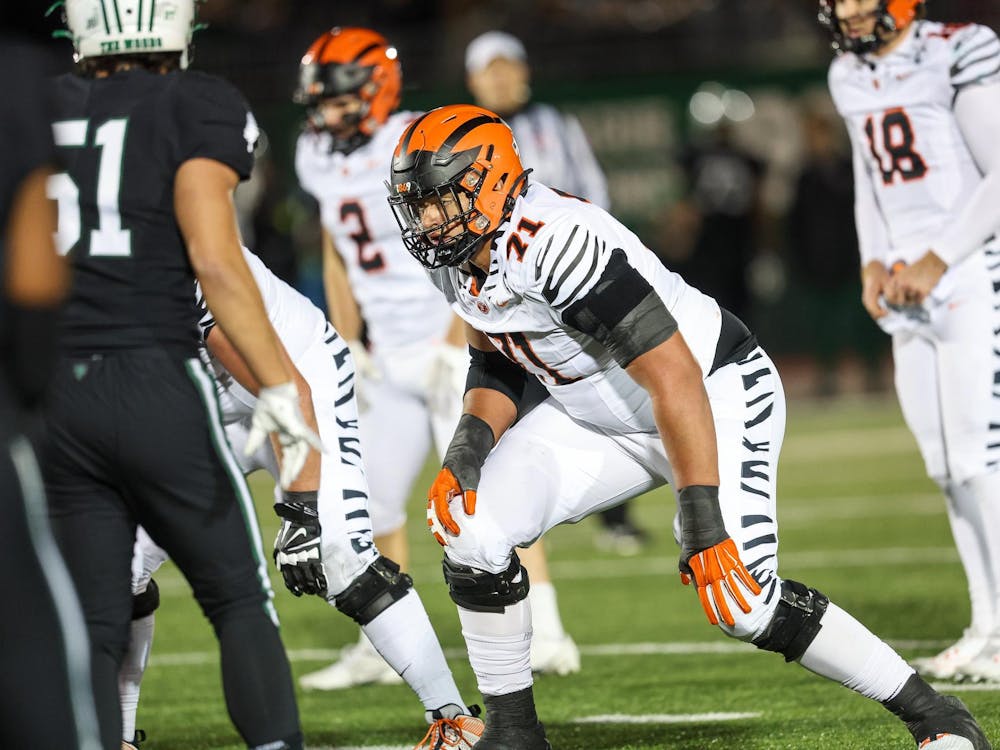During the second fall lacrosse practice in early September, sophomore midfielder Paul Zima was going for a ground ball when he got hit by a teammate. His head was down, and his body was leaning over the ball. The teammate guarding him came at him from a perpendicular direction.
“I’m not sure what hit me — his shoulder, his head — but I went down pretty hard,” Zima said.
Afterward, Zima said he felt “a little bit dizzy and out of it.” He continued playing for a few more minutes, but since the feelings of disorientation continued he decided to go see the trainer. The trainer took Zima inside and led him through a series of verbal cognitive tests. After a doctor went over the results, Zima was diagnosed with a concussion.
This past summer, the Ivy League put in place new measures intended to help prevent concussions in lacrosse and soccer. These restrictions follow similar ones made to Ivy League football schedules in the summer of 2011, and new recommendations to prevent concussions in hockey are expected in December.
The common thread behind the new rules is the conviction that the best — and perhaps only — way to minimize concussion in contact sports is to reduce exposure, according to Director of Athletic Medicine at University Health Services Margot Putukian.
“The Ivy League took a leadership role as it relates to decreasing the number of contact practices for football,” said Putukian, who served on the committees that recommended both sets of new policies.
In football, this emphasis on reducing exposure resulted in the new rule limiting full-contact practices in season to two a week. Head coach Bob Surace ’90 said this regulation has not had a negative impact on the team’s quality of play.
“You can play physical, tough football and do things where you’re limiting contact when it’s possible,” Surace said in an interview for an NCAA educational film attended by The Daily Princetonian. “I love the fact that the Ivy League is taking measures where all the teams are doing this.”
Surace said the team practices in full pads on Tuesdays and Wednesdays but holds a non-contact practice on Thursday. The NCAA allows a maximum of five full-contact practices per week.
The new lacrosse regulations also focused on reducing exposure to contact. In men’s lacrosse, coaches must hold at least 11 practices per year with no body checking and cannot hold more than one full-contact practice per day. In women’s lacrosse, stick checking must be excluded in at least 10 spring practices.
In addition to limiting practices, Putukian said proper technique can play a role in concussion prevention as well. The new soccer regulations focus mainly on teaching players how to go up for headers without putting themselves at risk. While actually heading the ball does not cause concussion, Putukian said dueling with another player for a ball in the air often does.
Because technique can be important, Surace said coaches have a responsibility to help reduce the likelihood of concussion.

“If you don’t teach proper tackling technique, you’re putting your players at risk. If you don’t teach proper blocking technique, you’re putting your players at risk,” Surace said.
But beyond limited exposure and practicing proper technique, very little can be done, especially in riskier sports and positions. Junior goalie Ben Dearborn said he has been hit in the head hundreds of times as a member of the men’s water polo team. Because of the nature of his position, there’s little he can do to prevent this.
“My position is to have stuff thrown at my head really hard,” Dearborn said.
He suffered his second diagnosed concussion — he suspects he has had two more that were never diagnosed — during a 13-10 loss to Navy on Sept. 22. He got hit in the head during that game, as he did in the previous three games. Now his season is over, and he says he still doesn’t feel quite right.
“I’ll be fine in the long term, but we need to be very careful with how quickly I get back in the pool,” Dearborn said.
The return-to-play process lasts a couple of weeks on average, Putukian said, though some athletes get cleared to play just five to six days after suffering a concussion. When they arrive on campus, all athletes undergo a baseline neuropsychological assessment, which consists of computerized and pencil-and-paper cognitive tests.
After suffering a concussion, athletes take this assessment again. Results are sent to an outside consultant, who compares these assessments to the baseline and determines whether the athlete is still experiencing concussion symptoms. Zima, for example, failed the test twice and was out for two-and-a-half weeks before passing. He is now cleared to play.
“Once an athlete is symptom-free, they can start the return-to-play process, which is a gradual, incremental increase in terms of exertion, as well as risk for contact,” Putukian said.
Once they return to the practice field, players recovering from concussion are off-limits for contact. When he returned, Zima wore a red pinnie so his teammates knew not to make physical contact with him. Surace said at football practices players wearing green shirts are fair game while players who should not be put at risk for contact wear yellow.
Putukian said it is too early to tell how effective the new regulations have been in curbing concussions. Nevertheless, she acknowledged that increased awareness has led players and coaches to report instances of concussion in situations in which they may not have in the past.
Surace said he felt Ivy League football is safer for players now than it was when he played in the late 1980s, largely thanks to increased education about the importance of reporting head injuries.
“We laugh about those stories,” Surace said. “Fortunately I have some of my wits about me, but you played through things.”







